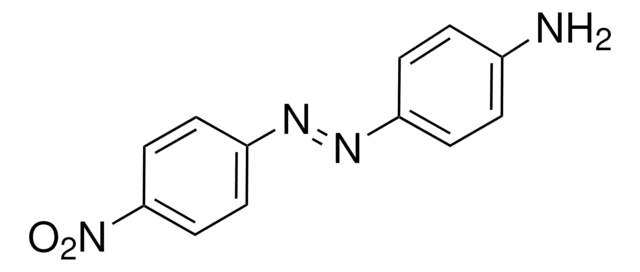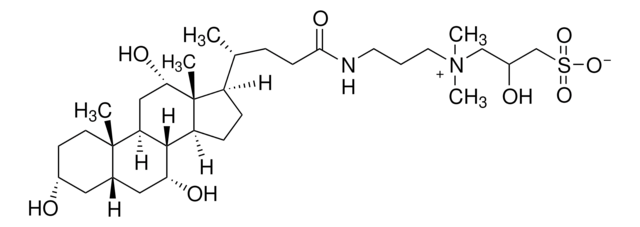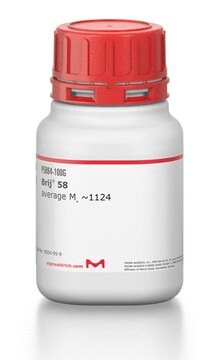Key Documents
Safety Information
480005
NDSB-201
A non-detergent sulfobetaine. Reported to prevent protein aggregation and facilitate the renaturation of chemically and thermally denatured proteins. Zwitterionic over a wide pH range. Easily removed by dialysis.
Synonym(s):
NDSB-201, 3-(1-Pyridino)-1-propane Sulfonate
About This Item
Recommended Products
Quality Level
Assay
≥99% (titration)
form
powder
manufacturer/tradename
Calbiochem®
storage condition
OK to freeze
desiccated (hygroscopic)
color
white
solubility
water: 50 mg/mL
shipped in
ambient
storage temp.
15-25°C
SMILES string
[S](=O)(=O)([O-])CCC[n+]1ccccc1
InChI
1S/C8H11NO3S/c10-13(11,12)8-4-7-9-5-2-1-3-6-9/h1-3,5-6H,4,7-8H2
InChI key
REEBJQTUIJTGAL-UHFFFAOYSA-N
General description
Application
- The non-detergent sulfobetaine-201 acts as a pharmacological chaperone to promote folding and crystallization of the type II TGF-ß receptor extracellular domain.: This study explores the role of NDSB-201 in enhancing the folding and crystallization of a specific protein domain, highlighting its potential as a stabilizing agent in protein biochemistry (Kiessling et al., 2015).
- Stabilizing additives added during cell lysis aid in the solubilization of recombinant proteins.: Research demonstrated that NDSB-201, among other additives, assists in the solubilization of proteins during cell lysis, suggesting its effectiveness in improving recombinant protein yield (Van Voorhis et al., 2012).
- Investigation of protein refolding using a fractional factorial screen: a study of reagent effects and interactions.: Discusses the impact of various reagents, including NDSB-201, on protein refolding, providing insights into how these additives interact and influence protein structure restoration (Fox et al., 2005).
- Preparation of functional recombinant protein from E. coli using a nondetergent sulfobetaine.: Highlights the utility of NDSB-201 in preparing functional recombinant proteins from E. coli, underscoring its practical applications in molecular biology and biochemistry (Chen et al., 2000).
Warning
Reconstitution
Other Notes
Vuillard, L., et al. 1995. Biochem. J. 305, 337.
Legal Information
Storage Class Code
11 - Combustible Solids
WGK
WGK 1
Flash Point(F)
Not applicable
Flash Point(C)
Not applicable
Regulatory Listings
Regulatory Listings are mainly provided for chemical products. Only limited information can be provided here for non-chemical products. No entry means none of the components are listed. It is the user’s obligation to ensure the safe and legal use of the product.
JAN Code
480005-1KG:
480005-25SGM:
480005-250GM:
480005-25GM:
480005-GM:
Certificates of Analysis (COA)
Search for Certificates of Analysis (COA) by entering the products Lot/Batch Number. Lot and Batch Numbers can be found on a product’s label following the words ‘Lot’ or ‘Batch’.
Already Own This Product?
Find documentation for the products that you have recently purchased in the Document Library.
Customers Also Viewed
Our team of scientists has experience in all areas of research including Life Science, Material Science, Chemical Synthesis, Chromatography, Analytical and many others.
Contact Technical Service












